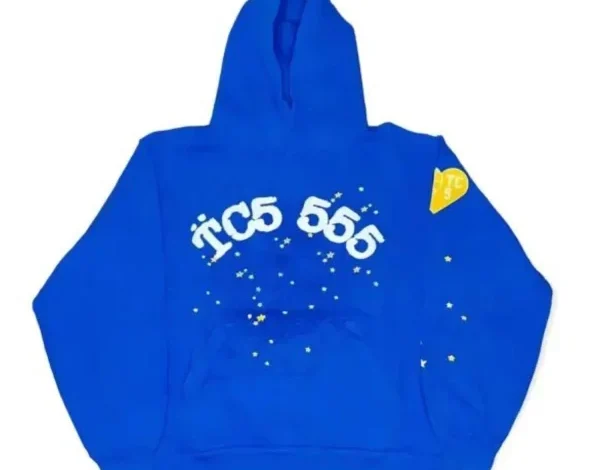
Trapstar: The Rise of a Bold Streetwear Brand
Trapstar is a fashion brand that has made a significant impact on the streetwear scene, combining bold, urban aesthetics with a message of resilience and authenticity. Founded in London, Trapstar’s designs reflect a deep connection to the city’s vibrant, diverse culture, and the global appeal of street fashion. Over the years, the brand has cultivated a loyal following, known for its exclusive collections, collaborations, and its ability to push boundaries in fashion. This article explores the origins, influence, and legacy of Trapstar, a brand that has become synonymous with modern streetwear culture.
The Origins of Trapstar
Trapstar was established in 2005 by a group of friends from London who shared a common interest in fashion, music, and street culture. The brand was born from a desire to create clothing that reflected their experiences in the city’s urban environment. The founders, who went by the names Mikey, Lee, and Will, wanted to make a statement that captured the energy and individuality of the streets.
The name “Trapstar” itself is a nod to the hustle and grind of the streets, referencing the trap music culture and the notion of success achieved through perseverance and hard work. The brand’s ethos quickly resonated with a growing audience, particularly among young people who embraced the rebellious spirit of the streets.
Streetwear and Trapstar’s Identity
At its core, Trapstar is a streetwear brand, but what sets it apart is its unique approach to blending high fashion with everyday, functional wear. From oversized hoodies and graphic tees to custom-made jackets and limited-edition sneakers, Trapstar’s collections fuse contemporary designs with references to popular culture, music, and graffiti art. Its distinctive use of bold logos, graphic prints, and dark colors has made the brand instantly recognizable to those who are in the know.
Trapstar’s identity is also heavily influenced by London’s youth culture, especially the city’s hip-hop and grime scenes. The brand’s designs often include subtle nods to street art, the underground music scene, and the fashion that can be found on the streets of London’s boroughs. This connection to the city’s subcultures has helped Trapstar stay true to its roots while gaining global recognition.
The Trapstar Aesthetic
Trapstar’s aesthetic is defined by its fearless, urban edge. The designs are intentionally bold, making use of aggressive fonts, graphic elements, and striking imagery that speaks to its target audience. It’s not just about clothing; it’s about self-expression and making a statement.
The use of monochrome colors is a hallmark of Trapstar’s designs, often mixing black, white, and shades of grey with occasional splashes of neon or metallic accents. This creates a sense of contrast and sharpness, reinforcing the brand’s no-nonsense attitude.
One of the most notable features of Trapstar’s aesthetic is the use of logos and symbols. The “Trapstar” name is frequently displayed in large, eye-catching fonts, and the brand’s emblem—a star enclosed in a circle—has become an iconic symbol of streetwear. The combination of strong graphics and minimalist styles makes Trapstar clothing easy to spot, even in crowded fashion landscapes.
Collaborations and Limited-Edition Releases
A key factor behind Trapstar’s success has been its ability to collaborate with some of the biggest names in fashion, music, and art. The brand has worked with global brands like Puma, Nike, and Adidas, creating exclusive, limited-edition sneakers and apparel that merge Trapstar’s unique style with these well-established labels.
These collaborations have helped Trapstar expand its reach beyond the London streetwear scene and into international markets. The releases are often highly anticipated, with fans eagerly waiting for the drop of new collections. This exclusivity has only added to the allure of the brand, creating a sense of urgency and anticipation among consumers.
Trapstar’s collaborations aren’t limited to just fashion brands; the company has also teamed up with influential artists and musicians, further cementing its place in pop culture. For example, the brand has collaborated with hip-hop artists such as Jay-Z and Rihanna, who have been spotted wearing Trapstar designs, thus boosting the brand’s visibility and credibility within the music industry.
Trapstar’s Influence on Street Culture
Trapstar has become more than just a clothing brand; it has established itself as a symbol of street culture. Its designs, which are influenced by the music and art that dominate the urban landscape, are a reflection of a lifestyle that values individuality, self-expression, and resilience. The brand has managed to tap into the zeitgeist of the modern streetwear movement, combining elements of rap, fashion, and street art to create a truly unique identity.
As streetwear continues to dominate the fashion industry, brands like Trapstar are influencing not just the way people dress, but how they perceive urban culture. Trapstar has helped shape the aesthetic of today’s youth, particularly within cities that are known for their vibrant subcultures. The brand’s designs offer a platform for young people to express themselves through clothing, allowing them to proudly wear their identity on their sleeves.
Trapstar’s Global Reach
Though Trapstar originated in London, its influence has grown to global proportions. Today, the brand has a dedicated following in cities around the world, including New York, Los Angeles, Tokyo, and Paris. Trapstar’s global appeal can be attributed to its ability to blend local influences with universal themes, making it relevant to a wide range of cultures and demographics.
The internet and social media have played a significant role in Trapstar’s expansion, allowing the brand to connect directly with fans worldwide. Its Instagram presence, in particular, has become an essential tool for showcasing new collections and creating buzz around upcoming releases. The use of social media platforms has allowed Trapstar to engage with its audience in a more personal and interactive way, helping to solidify its place as a global streetwear brand.
Trapstar’s Legacy and Future
As Trapstar continues to grow and evolve, its legacy within the streetwear industry remains undeniable. The brand has successfully carved out its niche by staying true to its roots while pushing boundaries in design, collaborations, and marketing. Its dedication to authenticity and its connection to street culture have helped it build a loyal following, and its ability to stay ahead of trends ensures that it will continue to play a significant role in the fashion world for years to come.
Looking to the future, Trapstar is poised to expand even further, potentially branching out into new product categories and increasing its global reach. As streetwear continues to dominate the fashion world, brands like Trapstar will remain at the forefront of the movement, influencing not just fashion, but culture as a whole.

